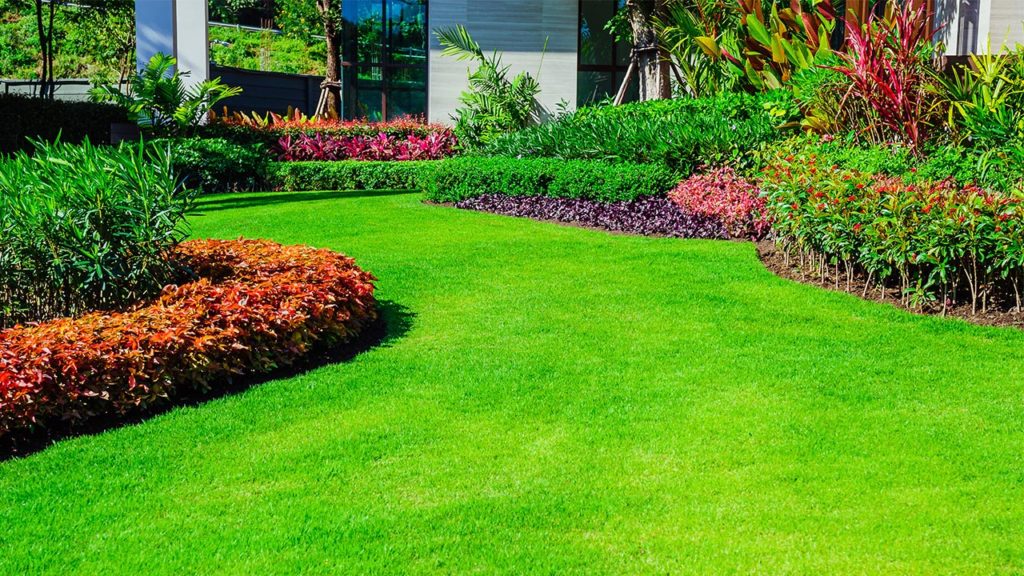7 secrets for a perfect lawn
Maybe the perfect lawn does not exist. Nevertheless, there is the perfect lawn for your requests. This is why there isn’t a single and universal way to take care of the lawn. Therefore, everything depends on the prevailing conditions and on the lawn’s use.
In order to better your lawn, an empathic approach is necessary, together with the respect for the plant and the knowledge on how it works in your garden. When nature works against us, for example with an unpredicted storm or a terrible insect infestation, it is necessary to collaborate with nature, in order to solve the problem.
Here you are 7 tips to be put into practice.
- Planning in advance.Lot of people tend to adopt a reactive approach concerning lawn’s care. They do not do anything else except cutting the grass, unless any problem appears. Once understood what lawn needs during the year, you will be able to plan in advance and ensure that no problems arises or avoid that it will become unmanageable.
- Love the soil.Most of the time we are pushed to focus only on the appearance, on the plants’ green part, thinking that our lawn’s problems can be solved through superficial applications, such as fertilizers, herbicides or similar products. Sometimes the problem is underground. Basilar principles of modern lawn care suggest to maintain an healthy environment for the whole plant, not only for the external green part.
- Let it breath.Lawn soil is never ploughed, on the contrary, it is constantly flattened. Therefore, the expulsion of the whole air makes the roots suffocating. What is recommended to do is aerating it well. It will be necessary to create specific spaces for aeration, without keeping on flatting the soil. It will be sufficient to repeat this activity once or twice per year, in order to see your lawn’s improvement.
- It is necessary to thin out the so-called felt, or rather dead grass, made up by little branches and accumulated wastes, which can suffocate the grass and prevent the water to reach the soil. We are dealing with a technique known as scarification, wrongly considerer useful only to remove the musk. Actually, if performed correctly, it would be able to prevent musk growth. If you perform this activity regularly, at least once a year, you will avoid to suffer from the syndrome of bold lawn, for weeks. It is always better to prevent musk problem, avoiding it will take on catastrophic proportions. Generally, mosses kill the plant more easily than the spores, hidden in the felt. Therefore it is necessary to follow a plan to monitor the issue, checking the felt, cleaning the lawn from wastes and adopting products against mosses only after the scarification.
- Feeding in the best way. Everytime you cut the grass, some nutrients depositions are removed and thrown in the compost. Nevertheless plants need the right nourishment for every season. For this reason it is important to plan a good lawn feeding programme, which will lead to a great difference in terms of flourishing. Keep your lawn healthy, with a thick and luxuriant mantle and you won’t see any resistant weed anymore.
- Learning how to cut the grass properly.An incorrect cut, too short or done with unsharpened blades, can damage any lawn incredibly. On the other hand, the solution is really easy: you should never cut more than a third the existent height and you should sharpen blades different times per year.
- Let the lawn drives you.Take notes of what you have done, how the lawn reacted to your actions and what the prevalent conditions over the year are. This will allow you to learn lot more about your lawn. If something goes wrong, you can consult an appropriate book to know the reason why, but first of all you always have to “consult” the lawn to find the most appropriate remedy.
Often lawns are not taken care of during winter. Such a changing climate can be costly. Taking care of the lawn also in winter will prepare it for the following months in the best way and the observations will help you to adjust the preparation during the years.
Anyway, do not forget that it is always your garden’s lawn. Your challenge is understanding what its dynamics are. You have just to understand them and you’ll have an happy and healthy lawn.


